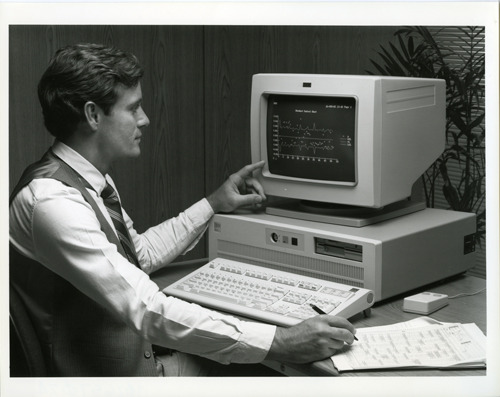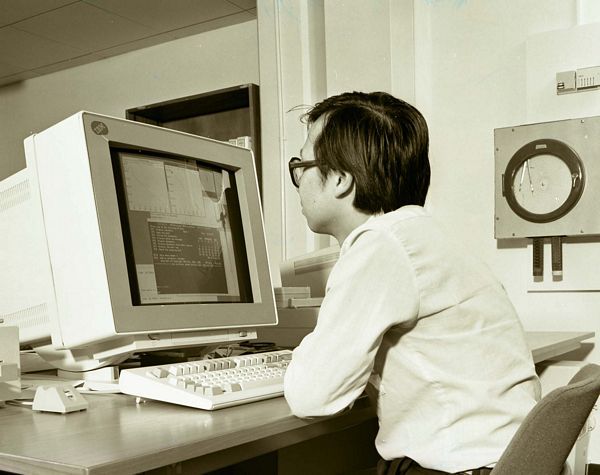IBM PC was not intended as a high-performance workstation back in early 80s. It could hardly be so with its slow CPU, limited graphics capability and a single-task operating system. However, IBM had an answer for performance demanding users requiring multi-tasking UNIX workstations. It was called IBM RT (known also as IBM RT PC) and was introduced in 1986.
There is some interesting history behind this computer. IBM had a RISC technology way before others (early 70s) but it required to pass a lot of internal processes and bureaucracy stuff to get it working in a custom chipset – IBM 801 CPU. IBM RAMP was introduced in 1986 and it was a spin-off project of the original CPU architecture. This 32-bit CPU was made of multiple chips on a single board and the computer needed another board to handle floating-point calculations in hardware (which was optional).
The first (6-Mhz) version of the system was quite underpowered in comparison with workstations based on MIPS R2000 RISC CPUs. This was not the only issue on the competitive market with well-established players like Apollo, DEC, HP and Sun. AIX* (IBM’s UNIX implementation) was not 4.2BSD compatible which resulted in limited software availability. IBM didn’t give much support to this product and company salesmen had no reason to push it due to low commissions.
The system used custom 32-bit bus for CPU cards and memory. Other cards like graphics adapters or storage (ST-506, ESDI) and network (token ring, Ethernet) controllers were designed for standard 16-bit AT slots fully compatible with PC line.
There were four graphics adapters available. Two with resolution of 720×512 in monochrome (black & white) or with 16 colors (out of palette of 64 colors) which were combined with 15-inch CRTs. Other two adapters offered 1024×768 (1-bit monochrome) or 1024×1024 with 256 colors out palette of 4096 colors and were combined with 19-inch CRTs (with 60hz refresh rate). Unlike standard PC graphics cards, these supported BitBlt transfers, line draw and image copy/merge to offload graphics operations from main CPU.
IBM RT was used for certain CAD applications and for shopping store control but it was not very successful on the workstation market.
*) AIX stands for Advanced Interactive Executive
- Computer Chronicles about IBM RT: https://www.youtube.com/watch?v=Bxijv0v6Efo
- Old IBM RT FAQ: http://www.cs.cmu.edu/afs/andrew.cmu.edu/usr/shadow/www/ibmrt/faq/hardware.txt
- Pictures of the systems and internal boards: https://fjkraan.home.xs4all.nl/comp/ibm6150/index.html
- IBM RT Hardware Reference Manual: https://www.manualslib.com/manual/1016752/Ibm-Rt-Series.html?page=315#manual
- More information: http://ohlandl.ipv7.net/6152/rt_index.html
- IBM RISC architecture: http://www-03.ibm.com/ibm/history/ibm100/us/en/icons/risc/

